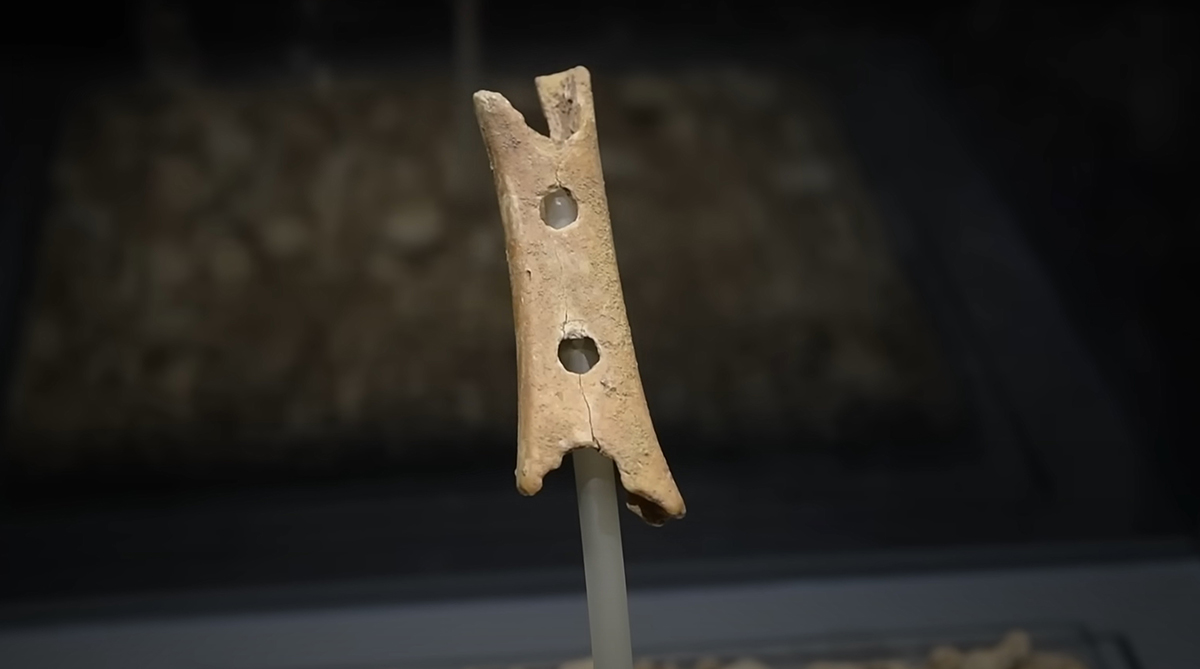


The 60,000-year-old artefact rewriting Neanderthal history – BBC REEL

In 1995, archaeologist Ivan Turk discovered a unique perforated bone in the Divje Babe cave in Slovenia. The artefact was found in the middle of a Palaeolithic layer of earth, near the remains of a Neanderthal fire place, stone and bone tools.
Watch this fascinating short film from BBC REEL about the discovery of an excavated femur bone of a bear in which 4 aligned holes had been carefully drilled using a bear tooth. Turk believes this was a Neanderthal flute made between 50,000 and 60,000 years ago - the oldest musical instrument yet found.
What was the purpose of this Neanderthal instrument? Perhaps it was functional, as a signal whistle used to recreate sounds to attract animals on a hunt. Or perhaps a musical instrument for ritual purposes - for joy, for mourning. If so, it suggests that musical symbolic behaviour was not unique to anatomically modern humans.
by Bradshaw Foundation
Monday 04 December 2023
by Bradshaw Foundation
Friday 30 June 2023
by Bradshaw Foundation
Thursday 06 April 2023
by Bradshaw Foundation
Thursday 24 November 2022
by Bradshaw Foundation
Tuesday 27 September 2022
by Bradshaw Foundation
Thursday 08 September 2022
by Bradshaw Foundation
Tuesday 19 July 2022
by Bradshaw Foundation
Monday 06 June 2022
by Bradshaw Foundation
Friday 11 March 2022
by Bradshaw Foundation
Wednesday 02 March 2022
by Bradshaw Foundation
Thursday 26 August 2021
by Bradshaw Foundation
Monday 16 August 2021
by Bradshaw Foundation
Tuesday 06 July 2021
by Bradshaw Foundation
Thursday 06 May 2021
by Bradshaw Foundation
Thursday 06 May 2021
by Bradshaw Foundation
Tuesday 16 March 2021
by Bradshaw Foundation
Monday 04 December 2023
by Bradshaw Foundation
Friday 30 June 2023
by Bradshaw Foundation
Thursday 06 April 2023
by Bradshaw Foundation
Thursday 24 November 2022
by Bradshaw Foundation
Tuesday 27 September 2022
by Bradshaw Foundation
Thursday 08 September 2022
by Bradshaw Foundation
Tuesday 19 July 2022
by Bradshaw Foundation
Monday 06 June 2022
by Bradshaw Foundation
Friday 11 March 2022
by Bradshaw Foundation
Wednesday 02 March 2022
by Bradshaw Foundation
Thursday 26 August 2021
by Bradshaw Foundation
Monday 16 August 2021
by Bradshaw Foundation
Tuesday 06 July 2021
by Bradshaw Foundation
Thursday 06 May 2021
by Bradshaw Foundation
Thursday 06 May 2021
by Bradshaw Foundation
Tuesday 16 March 2021
Friend of the Foundation











